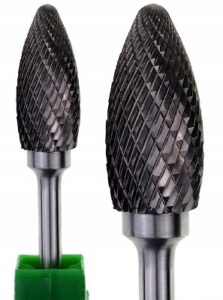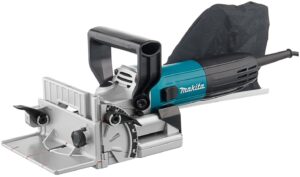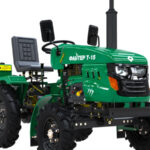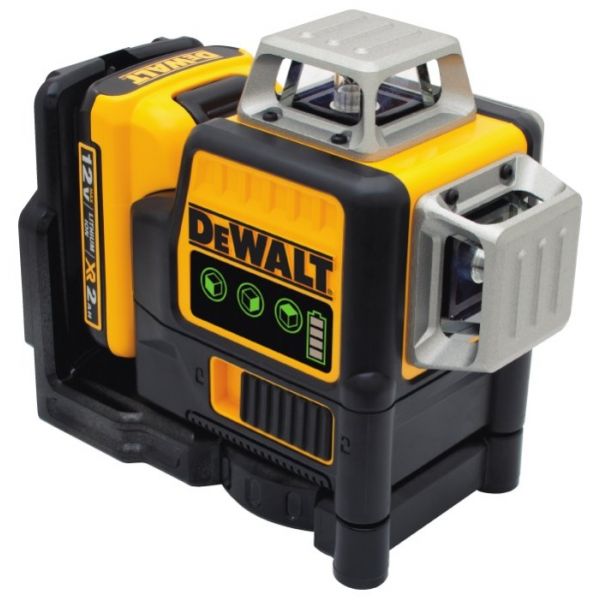Types of wood cutters: plunge-cut, edging, lamella, filler, selection criteria
Types of cutters depend on the area of their use. Tools are divided into several groups, for example, household and professional, for wood, metal and plastic. The main dividing criteria and parameters that you should pay attention to when choosing a router are described in the article.
The content of the article
Classification of cutters
Types of wood cutters are classified according to different criteria. The most important parameter is the scope of application. Thus, some tools are universal, while others are highly specialized. The following types are most often used in practice:
- Plunge (also rod) milling cutters are used everywhere for different types of work. Convenient and practical, it is used by experienced and novice carpenters. Necessary for creating grooves, rounded areas, and also used for chamfering.

- The edging is intended for chamfering. It is also used to form small-depth recesses and grooves. Used for working with laminated parts or veneer-coated workpieces. This tool is not used in everyday life; it is more often used in woodworking enterprises.

- The cutter for jointing with a manual wood router is equipped with several knives for leveling the surface. Used for processing hard and soft wood.

- Rotary is a tool used in construction for processing edges. It is also used to make holes in wood and other materials, such as plastic.

- Filler is a specialized tool for creating paired holes. With their help, parts are connected to each other. Often used in furniture production.

- Lamellar is another special-purpose cutter. Used to create grooves for grooves.

You can also divide tools depending on what material they work on. So, there is a metal cutter for a hand router, and there are cutters for wood and plastic.
Router selection criteria
It is of great importance which router bits are used. But no less important are the criteria by which you should choose a device. There are several such parameters - they are described in detail below.
Power
It is the power that determines how efficiently the equipment will operate. The indicator also affects the length of the cutter. According to this criterion, 3 types of milling cutter are distinguished:
- Lightweight - power within 750 W, while the instrument weighs up to 3 kg.
- Medium - power increases to 1.5 kW, and weight within 5 kg.
- Heavy - can develop power up to 2.3 kW, while weighing more than 6 kg.
For everyday use, it is enough to purchase a light or medium class device. For professional purposes, for example, a wood-joining cutter for a hand router, heavy tools are used. With their help, you can cut tenons, treat the surface, and prepare holes for grooves. They also allow wood to be spliced according to a certain parameter (length, thickness or width).
Important
Beginner carpenters often chase power, believing that the larger this parameter, the better.But for domestic purposes, a device with a power of up to 1.5 kW is suitable. A device with higher productivity costs much more, and it is also noticeably heavier.
Cutting stroke
A wood cutter for leveling the surface is selected taking into account various parameters, including the working stroke. This is an important indicator that characterizes how deeply the tool penetrates into the part. For domestic use, 20 to 50 mm is sufficient. And professional cutters have a minimum requirement of 50 mm. Instruments that penetrate 80 mm or more are often used.
It is impossible to adjust the stroke of household appliances, but professional ones have such a function. To do this, the tools are equipped with a regulator that allows you to set a step of 0.1 mm. This precision is quite sufficient even for processing thin parts.
Rotational speed
If we talk about what types of cutters there are, it is worth mentioning the rotation speed. The quality of wood processing depends on this indicator. There are 3 types:
- Standard speed is between 20,000-30,000 rpm. These are the milling cutters that are most often used in practice.
- Slow is a speed within 20,000 rpm. It is used for plastic parts.
- High – more than 35,000 rpm.
With inexpensive tools used in everyday life, the speed cannot be adjusted. A similar option is available for instruments with a higher price. Moreover, if you plan to work only with wood, the adjustment function will not be needed.
Overload protection
We can say about a milling cutter that it is a tool with rapidly rotating cutters. In intensive operation they can overheat. The automatic shutdown system protects against this. Only professional equipment is equipped with it.
Unintentional start protection
This is a fuse that protects against the dangerous situation of accidental starting of the equipment. Almost all types of wood cutters for a hand router have it.
Electronic speed control
An additional option that is equipped with professional tools. Allows you to maintain the required number of revolutions, regardless of how dense the wood is.
Thus, the types of cutters depend on the material they work with, as well as on the scope of application. In order for them to work as efficiently as possible, you need to purchase a suitable router. To do this, devices are compared according to several indicators and the optimal option is selected.





